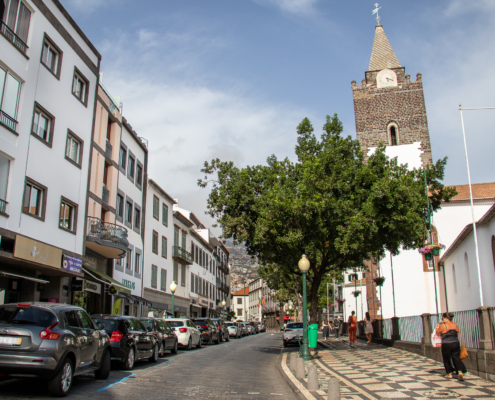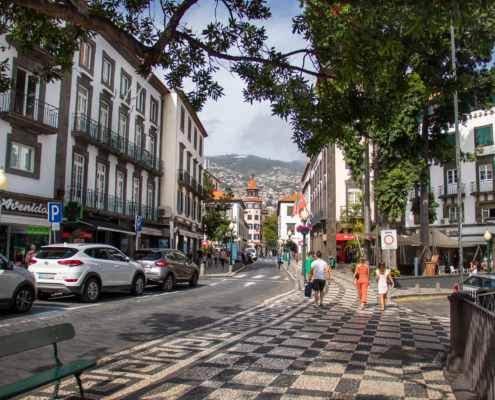Rua do Aljube
Rua do Aljube runs parallel to the north wall of the Sé Cathedral of Funchal and the choice of this name was not by chance, since the word aljube means “ecclesiastical prison”.
The clergymen had their private forum as well as had their prisons that were called Aljube. The Aljube was installed in Funchal in 1562 and was demolished at the end of the 19th century, but its memory lives on in the street named after it.
It was a structure that existed, in past centuries, in all dioceses and that in Funchal functioned by proximity to the Manueline building completed in the early 16th century.
The Cathedral occupies the entire southern frontage of the street, which ends at Largo de Gil Eanes and its northern side at Largo do Chafariz.
For decades, the street was mainly used by the Madeiran high society. Having been there during the last century, where shops were set up that were directed to those who had wealth. For example, the ready-to-wear Balão Vermelho, Maison Blanche, which was a kind of department store where the upper-middle class could find toys to clothes, passing through perfumery and Phoebus. Today the only one of these shops still functioning, located on the corner of Largo do Chafariz.
Behind the Cathedral, already at the junction with the Largo de Gil Eanes, there is an outdoor point of sale of flowers from Madeira, recently remodelled by the Municipality of Funchal, is a characteristic image of the island, much sought after and photographed by visitors. The sellers, known as florists, wear the typical Madeiran folk costume, which attracts the attention of those who visit us, and we can find them as well in greater numbers inside the Lavradores Market Building.







